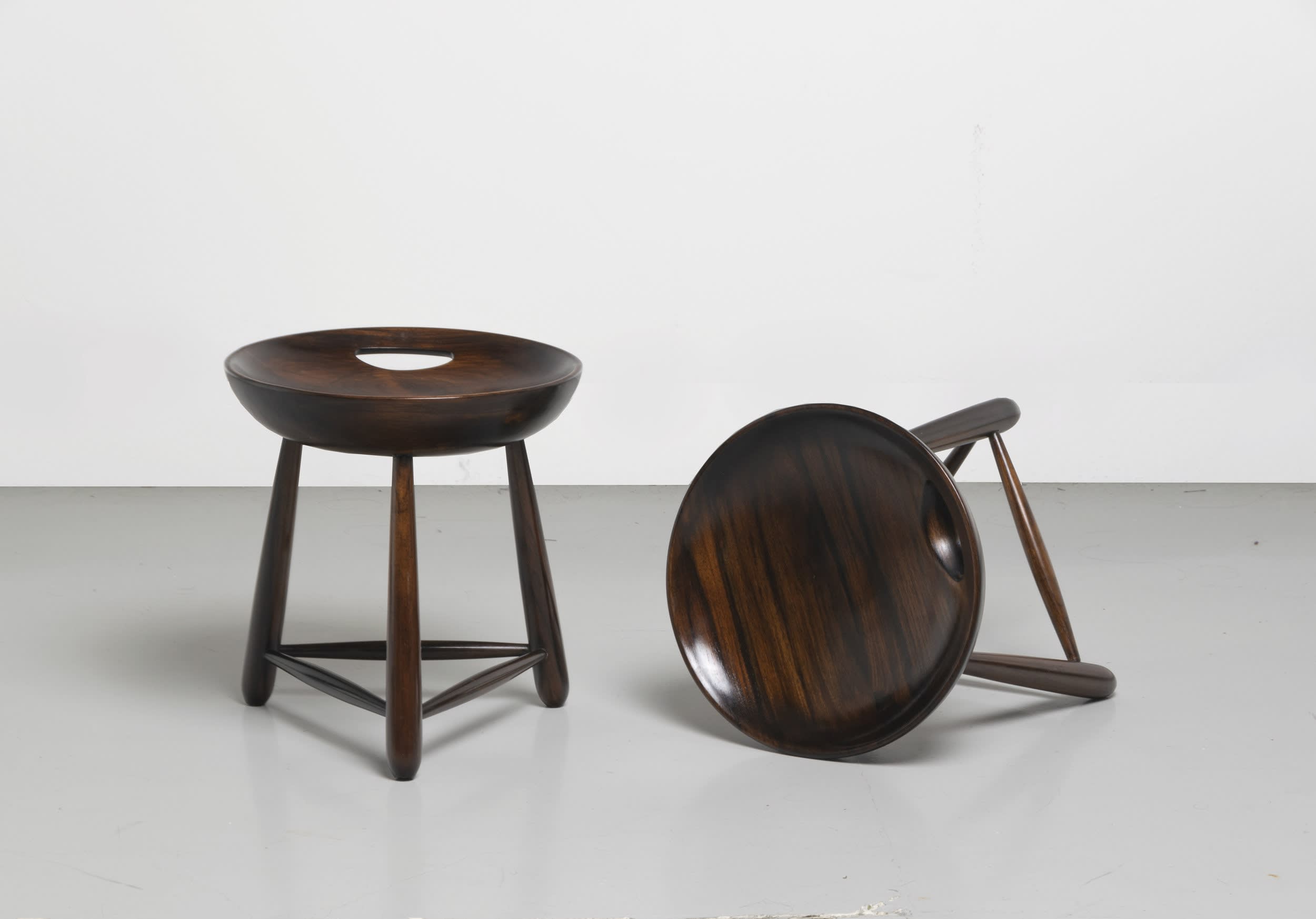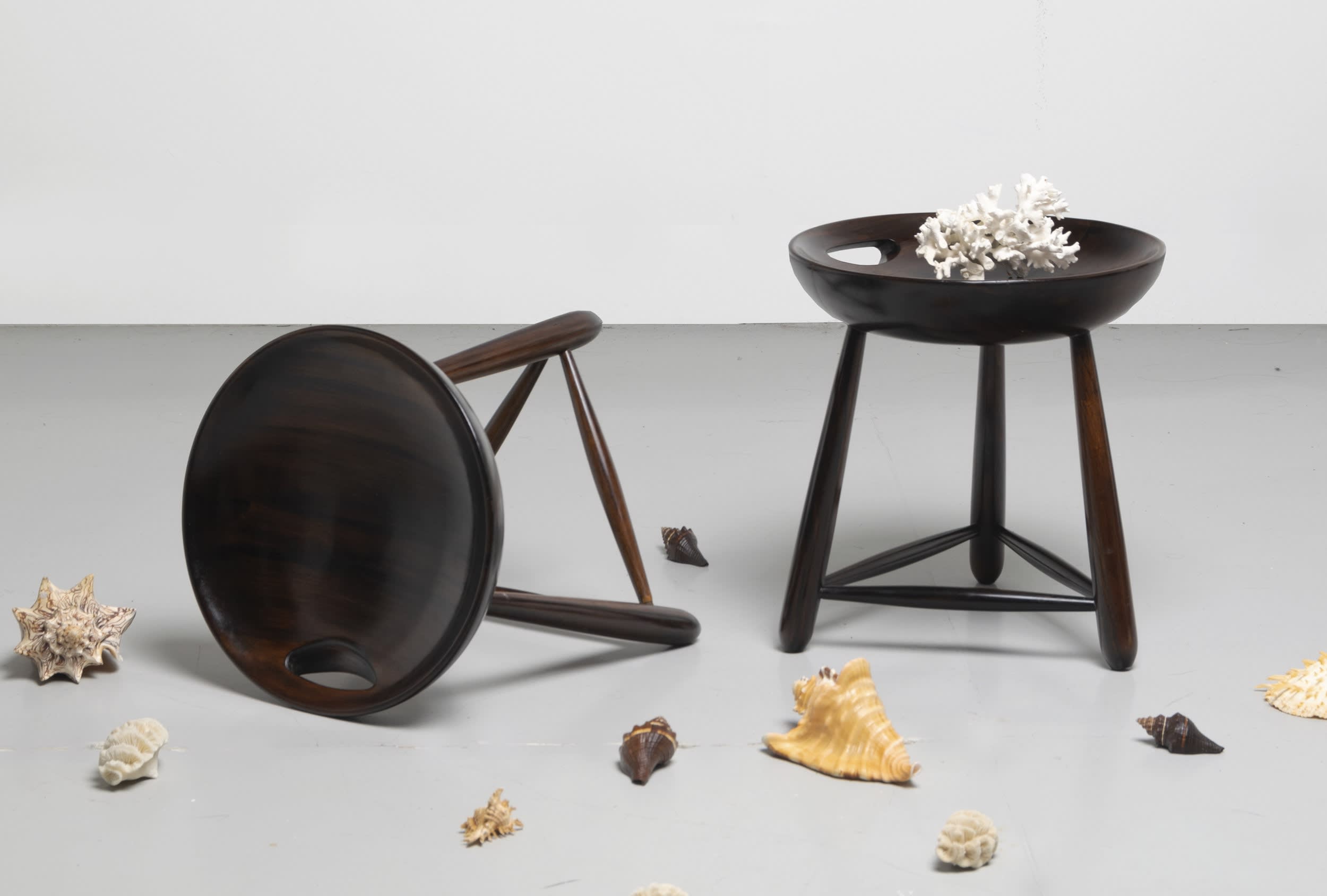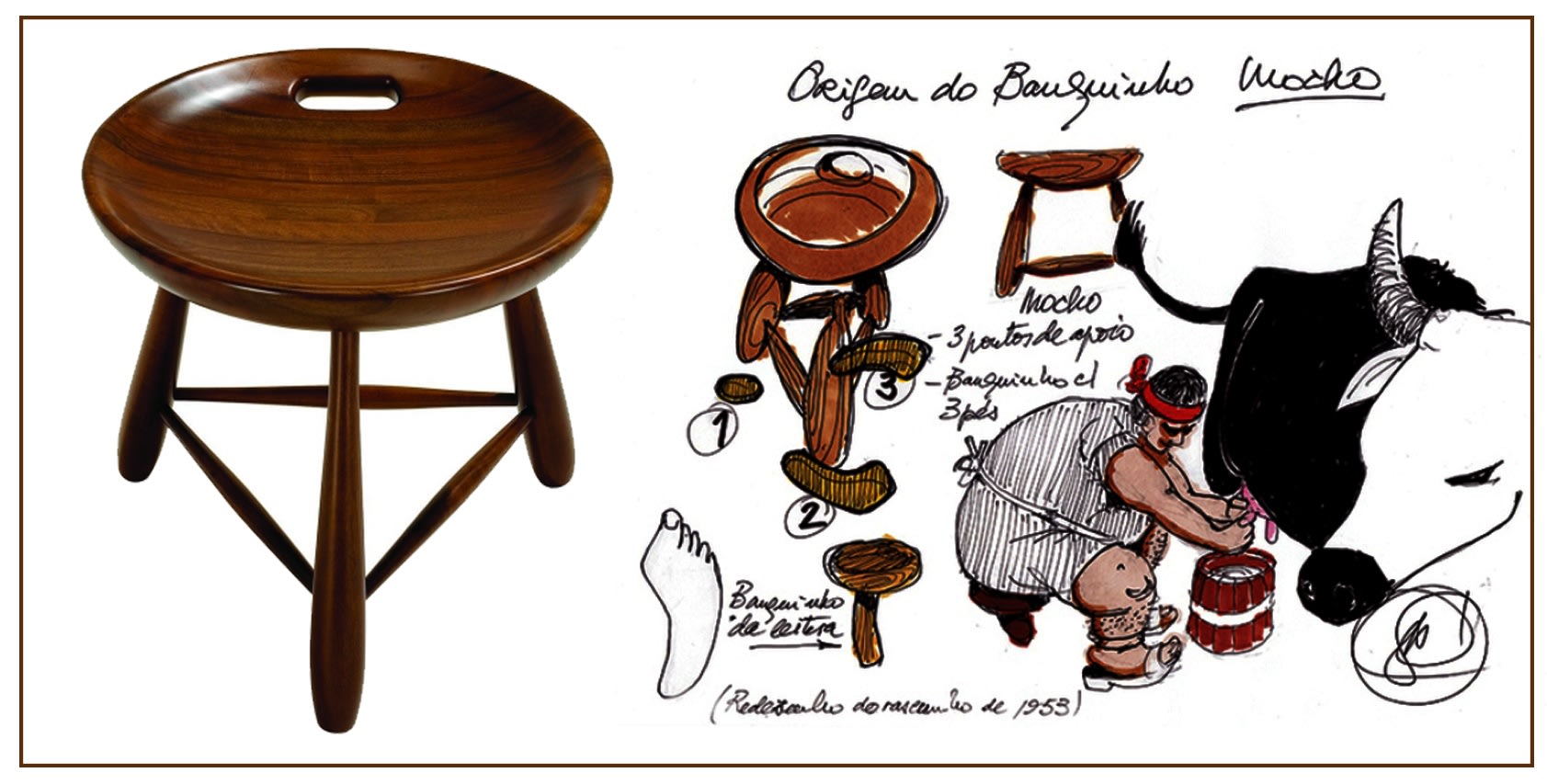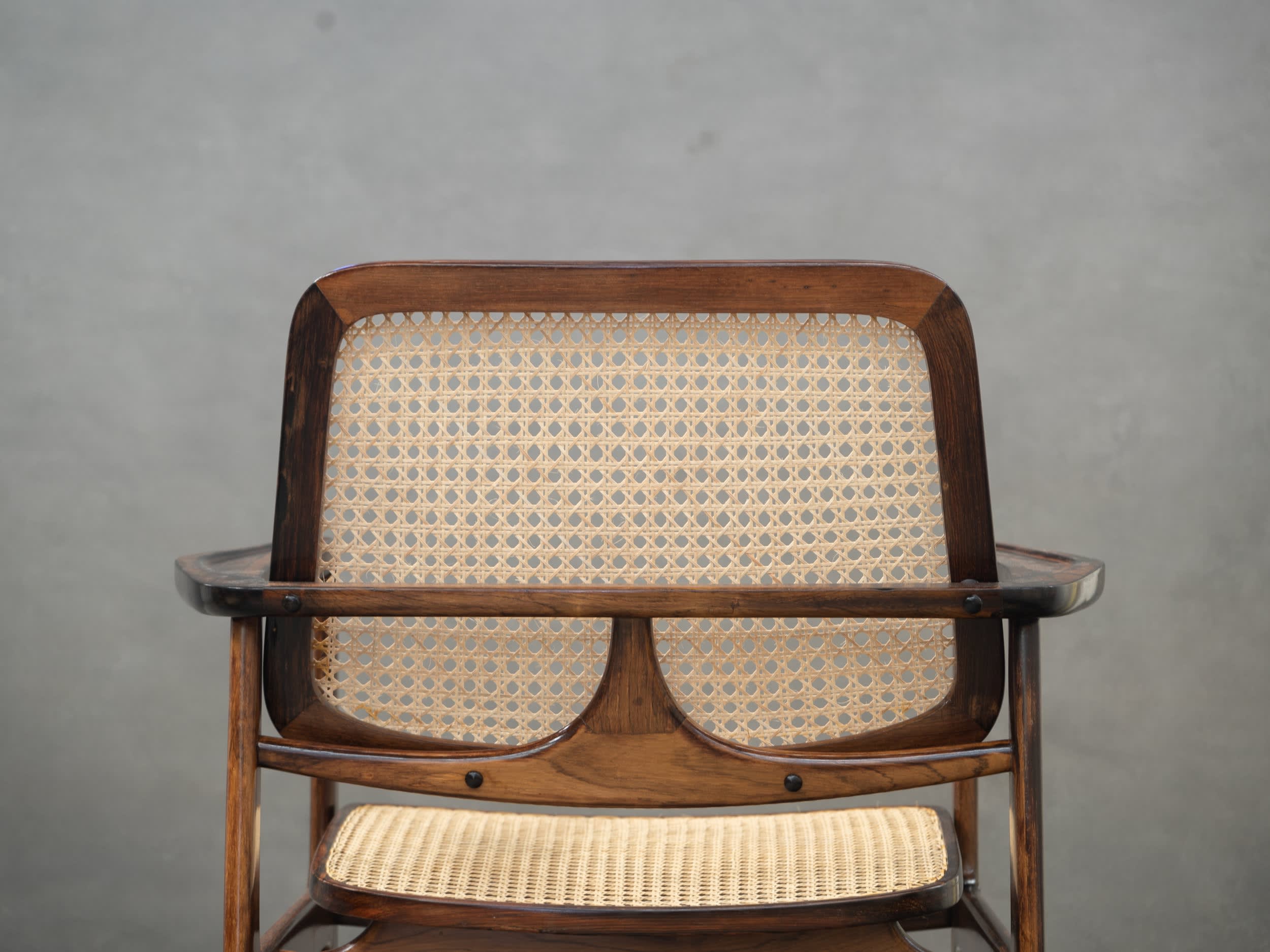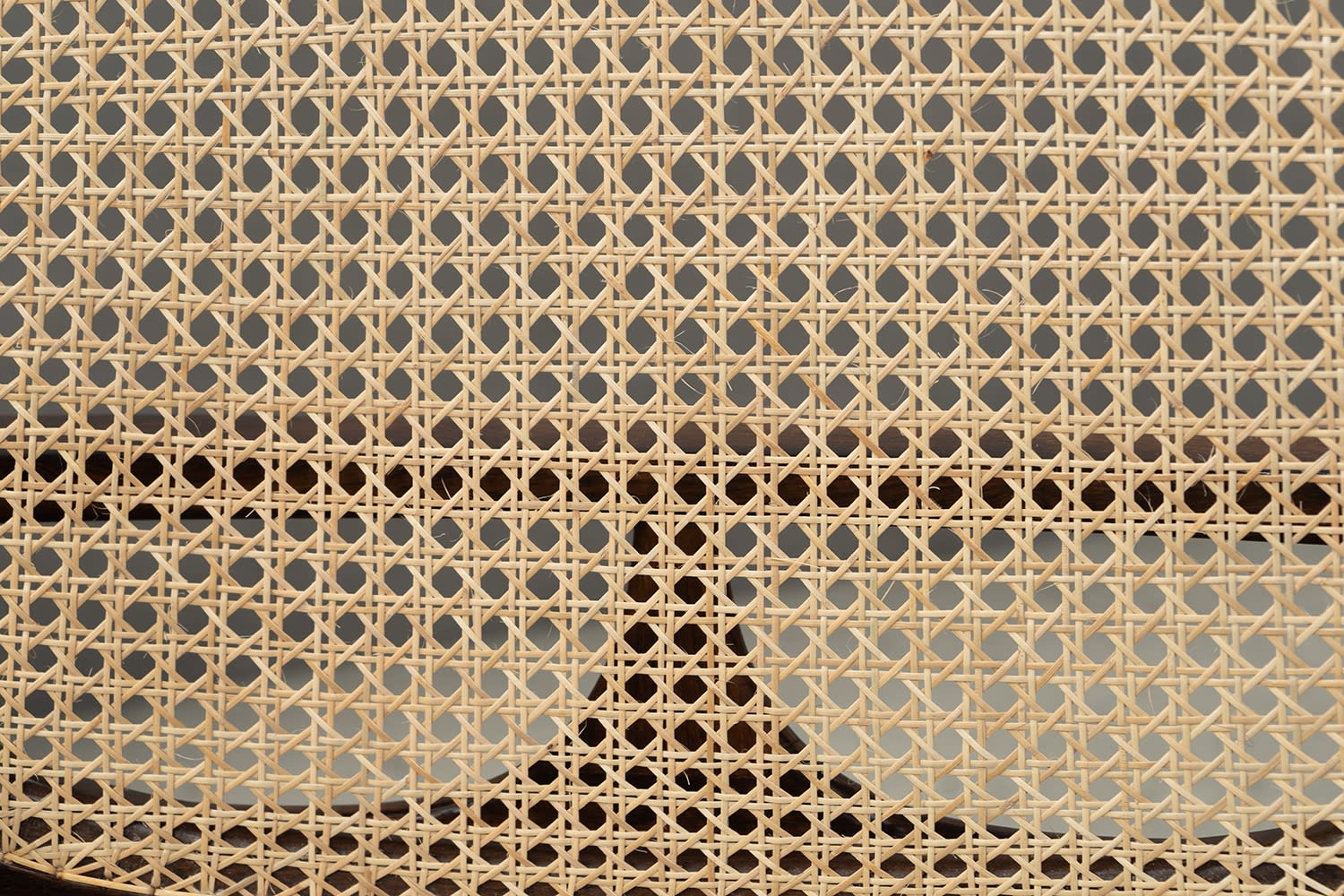-
MOCHO, THE SIMPLICITY AND ELEGANCE OF SERGIO RODRIGUES STOOL
SEPTEMBER 1, 2019
-
Sergio Rodrigues (1927-2014), designer and architect from Rio de Janeiro, opened Oca, both a gallery and a store, in 1955, at the heart of Ipanema. Rio de Janeiro in the 1950s was already a great metropolis, the brain and the heart of Brazil. Few things are as Brazilian as the oca, from the Tupi word ‘oká,’ and the Guarani word ‘Oca,’ which is an indigenous house made entirely of natural materials.
-
A piece of furniture is not only what we see, it is not just the material that it is made of, but something it has deep inside. It is the spirit of the piece. The Brazilian spirit. It is Brazilian furniture.
— SERGIO RODRIGUESSeats such as that of the chair Lucio Costa, the stool Mocho, and the armchair Mole, for example, suggest brazilianness [1] , speaking to signs of the national culture which are part of the founding myths of Brazil. As actors in a scenario that is filled with stories, they fit into a system of objects that exist for the living place, standing among the ‘household gods’ [2] who, for being personified, reached some autonomy in the 20 th century. Those who acquire these objects celebrate the fetish aura that surrounds them. The stool Mocho was the first seat produced and commercialized by Oca, in 1954. Not by accident, it was created in a time when identity issues were being discussed around the country. Sergio dives into the culture and rediscovers Brazil, giving identity to furniture and valuing the space around it. He also creates connections with the pieces’ past, local habits, and solutions that are already known to and part of society. The Mocho’s curves are carved in wood, and, as a sculpture, it is all about volume and mass.
-
Sergio was interested even in the simplest seats, those who were used both in the big house of a plantation in the 16 th and 17 th centuries, and in workshops, by craftsmen. They are objects with a regional past. In here, we can surely say an imaginary filled with rural Brazil elements is what inspires Sergio Rodrigues. They were created by anonymous artists and come to show sociocultural patterns, and the assimilation of a particular design which is broadly used around the country.
The stool, because it has no backrest, makes sure that one does not stay seated on it for long. Its constitution, however, allows for it to be moved around easily, and it can adapt to any environment. While creating the Mocho, Sergio was interested in simplicity. That is something one can tell even by the name Mocho, which is a stool with a single seat. According to Maria Loschiavo, it works as an adaptation of the milking stool. With its raw, low seat, it speaks to the rusticity of Brazilian farmhouses. However, it easily adapts to the informality of urban spaces. Its volume fits into a cubic prism, and its parts are only the indispensable. Solid, compact, the stool has a balanced composition, defined by the essential. Instead of four, it has three legs. Three pieces arranged in a triangular form hold the legs together, giving the stool greater stability. The hollow section makes it easy for people to hold it and move it around.
1 Brazilianness has to do with signs that represent the cultural diversity of and multiple identities to be found in the country, as proposed by Stuart Hall.
2 The ‘household gods’ are ‘spatial incarnations of the emotional bonds and the permanence of the family group. These gods [enjoy] a gentle immortality until the advent of a modern generation which [casts] them aside.’ Jean Baudrillard in The system of objects, p. 16. -
The text is part of the article “Critical Regionalism: An analysis of Brazilian architecture and design” Written in 2016 by Isabela Milagre and translated by Júlia Knaipp.
—
Texts and photograph content are part of Bossa Furniture creative production.
Historical file belongs to Instituto Sergio Rodrigues
